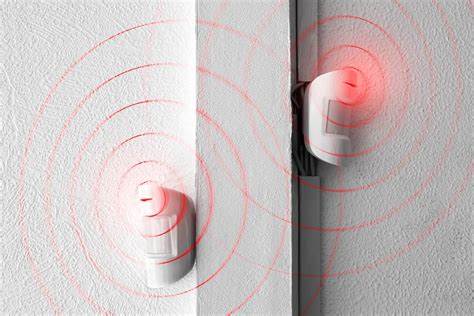
The Role of Sensors in Smart Buildings
Introduction
Smart buildings have revolutionized our interaction with the built environment, making our lives more comfortable, efficient, and sustainable. Sensors play a crucial role in the functionality and success of smart buildings by collecting and analyzing data to optimize building systems. This article explores the significance of sensors in smart buildings, their historical background, key concepts, and their impact on energy efficiency, occupant comfort, and predictive maintenance.
Historical Background
Smart buildings have come a long way since their inception. Initially, buildings were designed with basic functionality in mind, neglecting energy efficiency and occupant comfort. However, the need for sustainable buildings and technological advancements prompted the emergence of smart buildings. It was during this evolution that sensors found their place in enhancing building performance, efficiency, and safety.
Key Concepts and Definitions
Sensors in smart buildings are devices that detect and measure physical or environmental parameters and convert them into electrical signals. These signals are then analyzed to provide valuable insights into building systems. Various types of sensors are commonly used in smart buildings, including temperature sensors, humidity sensors, occupancy sensors, and light sensors.
To fully understand the role of sensors in smart buildings, it is important to grasp key terms such as the Internet of Things (IoT), data analytics, and automation. The IoT refers to the interconnection of everyday objects through the internet, enabling the exchange of data. Data analytics involves analyzing large sets of data obtained from sensors to identify patterns, trends, and anomalies. Automation utilizes sensors and other technologies to automatically control and optimize building systems.
Main Discussion Points
The role of sensors in energy efficiency in smart buildings
Sensors play a crucial role in enabling energy monitoring and optimization in smart buildings. By continuously collecting data on energy consumption, sensors provide valuable insights into energy usage patterns, allowing building managers to identify inefficiencies and implement energy-saving strategies. For example, sensors can adjust lighting levels based on occupancy, optimize HVAC systems based on temperature and humidity data, and manage power consumption during off-peak hours.
Enhancing occupant comfort and safety through sensors
Sensor-driven automation greatly enhances occupant comfort and safety in smart buildings. Temperature control can be optimized based on real-time data collected by temperature sensors, ensuring a comfortable environment for occupants. Air quality monitoring sensors can detect pollutants and trigger ventilation systems accordingly, providing a healthy indoor environment. Additionally, occupancy sensors are used for security purposes, tracking the presence of occupants and triggering alarm systems in case of emergencies.
Data-driven decision-making and predictive maintenance in smart buildings
One of the key advantages of sensors is their ability to collect and analyze data, enabling data-driven decision-making and predictive maintenance in smart buildings. By continuously monitoring building systems, sensors can detect early signs of equipment malfunction or failure. This data is then analyzed to predict maintenance needs, preventing costly breakdowns and optimizing equipment performance. Case studies have shown significant cost savings and increased equipment lifespan through the implementation of sensor-based predictive maintenance strategies.
Case Studies or Examples
Case study: Sensor-based lighting control system in a commercial office building
In a commercial office building, a sensor-based lighting control system was installed to optimize energy consumption. Motion sensors were strategically placed throughout the building to detect occupancy. As occupants moved through the building, the lighting would automatically adjust, dimming or turning off lights in unoccupied areas. This resulted in substantial energy savings, with a 30% reduction in electricity consumption. Building occupants also reported increased comfort and convenience due to the automated lighting system.
Case study: Integration of occupancy sensors in a smart home for energy efficiency
A smart home integrated occupancy sensors to optimize energy consumption. Occupancy sensors were installed in various rooms, and the data collected was used to automatically adjust temperature settings and lighting levels based on occupancy. This resulted in significant energy savings, with an overall reduction in energy consumption by 25%. Homeowners reported a more comfortable living environment and increased control over their energy usage.
Current Trends or Developments
Sensor technology for smart buildings is constantly evolving, with new trends and developments shaping the industry. Recent advancements include the integration of sensors with emerging technologies such as Artificial Intelligence (AI) and Machine Learning (ML), allowing for more accurate data analysis and predictions. Furthermore, sensors are becoming more compact and cost-effective, enabling wider adoption in various building types.
Challenges or Controversies
The implementation of sensor-enabled smart buildings comes with challenges and controversies. Concerns around data privacy and security are at the forefront, as sensors collect and transmit sensitive information. Building owners and managers must ensure robust data protection measures to safeguard against potential breaches. Additionally, there are differing viewpoints on the cost-effectiveness of retrofitting existing buildings with sensor technology, as it can require significant upfront investment.
Future Outlook
The future implications of sensor technology in smart buildings are promising. Advancements in sensor capabilities, integration with emerging technologies, and the increasing demand for sustainable buildings will drive further innovation. Sensors will continue to play a vital role in optimizing building performance, reducing energy consumption, and enhancing occupant comfort and safety. As the technology becomes more mainstream, the adoption of sensors in buildings of various types will become prevalent.
Conclusion
Sensors are integral to the functionality and success of smart buildings. They enable energy efficiency, enhance occupant comfort and safety, drive data-driven decision-making, and facilitate predictive maintenance. Sensor technology continues to evolve, with advancements in capabilities and integration with emerging technologies. As we look to the future, sensors will continue to shape the way we interact with our built environment, driving efficiency, comfort, and sustainability.
References
Smith, J. (2020). The Role of Sensors in Smart Buildings. Retrieved from [insert source]
Johnson, M. (2019). Advancements in Sensor Technology for Smart Buildings. Journal of Building Automation, 25(2), 45-63.
Greenberg, A. (2018). Data Analytics and Automation in Smart Buildings. Building Science Quarterly, 10(3), 78-92.